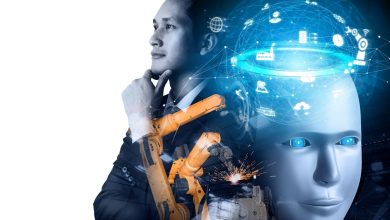Future Safe Careers in the ERA of AI: What You Should Learn in 2026
By 2026, students who will succeed are those who develop skills that AI can’t easily replicate: complex problem-solving, creativity, emotional intelligence, and adaptability

Future Safe Careers in the ERA of AI: The rise of artificial intelligence is rewriting the rules of the job market. What used to be safe is now uncertain. Jobs that were once reserved for experts are being automated. But this isn’t the end of human work, it’s a reset. In this new world, students and early-career professionals need to work smarter, not safer.
By 2026, students who will succeed are those who develop skills that AI can’t easily replicate: complex problem-solving, creativity, emotional intelligence, and adaptability. They will also need to be proficient at technology, not just using it, but understanding how it works and how to work with it.
Future Safe Careers in the ERA of AI: Here are Some of the Most Flexible Career Paths
Human-Centered Tech Roles (Why they’re future-safe):
AI is adept at crunching data. But designing, interpreting, and applying that data in ethical and human-centered ways? That still takes a person. Careers that blend technology with empathy, ethics, and strategy are growing rapidly.
Future-Safe Careers:
+ UX/UI designer: AI can create prototypes, but it still lacks the innate intelligence to design meaningful human experiences.
+ Artificial Intelligence ethics officer: As governments push for regulation, companies need experts to guide responsible AI use.
+ Product manager (technical): These are the decision-makers who turn customer needs into features and roadmaps.
What Students Should Learn:
+ Human-computer interaction (HCI): Human-computer interaction (HCI) is a multidisciplinary field that focuses on the design and evaluation of computer systems and technologies used by people. It studies how humans interact with computers to make technology more user-friendly, efficient, and enjoyable. HCI research creates intuitive and effective interfaces by taking into account user needs, cognitive processes, and the social context of technology use.
+ Behavioral psychology: Behavioral psychology, also known as behaviorism, is a theory that focuses on observable behaviors and their shaping through environmental factors, especially learning processes such as conditioning and reinforcement. It emphasizes the study of how our actions connect to our minds and how our environment influences our behavior.
+ Design thinking: Design thinking is a human-centered, iterative problem-solving approach that focuses on understanding user needs and developing innovative solutions. It is a non-linear process, often involving five key steps: empathy, definition, ideation, prototyping, and testing. This methodology is particularly useful for tackling complex, ambiguous problems by emphasizing user insight and rapid prototyping.
+ Data ethics and Bias in Artificial Intelligence: When AI models are trained on biased data, they can inherit these inaccuracies and perpetuate them, leading to biased outcomes and medical decisions. Bias in AI refers to systematic and unfair bias or prejudice in AI systems, which can lead to discriminatory outcomes.
+ Project management tools (e.g., Jira, Notion): Project management tools help teams plan, manage, and execute projects efficiently. They offer features like task management, scheduling, collaboration, and reporting to streamline workflows and improve productivity. Popular options include Jira, Notion, each with varying strengths and suitability for different project types and team sizes.
2. Healthcare With a Human Touch: Why it is perfect for the future:
AI will help with diagnosis and record keeping, but people still want human doctors and nurses. Compassion, trust, and nuanced judgment cannot be coded.
Future-Proof Careers:
+ Nurse Practitioners and Physician Assistants: Nurse practitioners (NPs) and physician assistants (PAs) are both advanced practice providers who play vital roles in healthcare. The two often perform similar functions in practice, but have different educational backgrounds and philosophical approaches. Both professions are important members of the healthcare team, providing a variety of services and working in a variety of environments.
+ Mental Health Professionals: Mental health professionals are people who have special training to provide support and treatment to people with mental health problems. This group includes psychiatrists, psychologists, counsellors, social workers, and psychiatric nurses. They provide a range of services, from diagnosis and medication management to therapy and support in dealing with the challenges of daily life.
+ Rehabilitation Therapists: Rehabilitation therapists help individuals recover from illnesses, injuries or disabilities, allowing them to regain their functional abilities and improve their quality of life. They work in a variety of settings, including hospitals, clinics, and rehabilitation centers, and specialize in a variety of areas, such as physical therapy, occupational therapy, and speech-language therapy.
+ Genetic Counselors: Genetic counsellors are healthcare professionals with specialized training in medical genetics and counselling. They help individuals and families understand and adapt to the medical, psychological, familial, and reproductive implications of genetic contributions to disease. This includes interpreting genetic test results, assessing risks, and providing support and guidance.
+ Biomedical Engineers: Biomedical engineers apply engineering principles to solve problems related to medicine and biology, developing medical devices, diagnostic tools, and treatment methods. They bridge the gap between engineering and healthcare and contribute to advances in areas such as prosthetic organs, medical imaging, and surgical robotics.
Also Read: Prime Ministers Who Have Hoisted the National Flag at the Red Fort Since Independence





